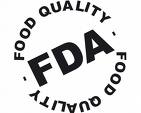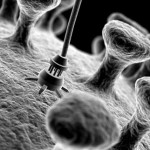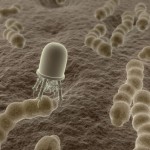
usalawyerstoday.com
It is safe to say that the current state of nanotech litigation is embryonic. There are only a handful of cases dealing with the validity of rules governing nanomaterials, and the results are
resoundingly similar – deference to the rule maker. In Kennecott Greens Creek Mining Co. v. Mine Safety and Health Admin., 476 F.3d 94, 946 (D.C. Cir. 2007) (a three year old case that accurately represents the issue in the few cases brought before the courts), judicial review was sought regarding three regulations promulgated by MSHA. Specifically, the rules were implemented to require mining operations to utilize new engines that reduced the emission of diesel particulate matter, but it was argued that those same engines produced high levels of nanoparticle emissions in the process. On appeal, the court disagreed with the mine owners and took a complete deferential approach because the risks associated with nanoparticles, at this point, are speculative at best until further developments.
We should expect to see similar types of cases with the same results for some time or until there is solid proof of a substantial problem.
In June 2009, the EPA Nanomaterial Research Strategy released a list of eight questions that need to be considered to determine the risks involved with nanotechnology and quite possibly could become the nexus for non-deferential judicial opinions in the future. Kristine L. Roberts, Nanotechnology and the Future of Litigation, LITIGATION NEWS,
Winter 2010, at 6, 8. The list on page eight includes the following inquiries:
1) What advances in technology must occur to detect and quantify nanomaterials in the environment and biological material?
2) What are the major environmental impacts?
3) What are the exposure risks?
4) What are the effects on our health?
5) What are the ecological effects?
6) How many risk assessment approaches need to be amended/created?
7) Which nanomaterials have a high potential for release?
8)Can manufactured nanomaterials be utilized in a sustainable manner?
This list, at first glance, seems like a blunt tool when compared to the enormity of what it is attempting to procure. However, this is one of the first proactive steps with regard to whom is going to be accountable for what in future ligation involving nanotechnology – litigation that should include more applicable standards based on
concrete information instead of automatic deference due to lack of knowledge.

 Recently, the President’s Cancer Panel released its report, “Reducing Environmental Cancer Risk: What We Can Do Now,” which made the bold and distressing statement that “the true burden of environmentally induced cancer has been grossly underestimated.” Currently, there are approximately 80,000 chemicals on the market in the United States many of which are likely carcinogens that are used by most Americans on a regular basis in their daily lives. The risks of these carcinogenic substances have a significantly greater impact on children than adults. The Panel observed that most of these chemicals are “un- or understudied and largely unregulated.” Among other things, the Panel concluded that research on the environmental causes of cancer has taken a back seat to research on the genetic and molecular mechanisms that cause cancer. Research into the environmental causes of cancer has been given low priority and insufficient funding, they say.
Recently, the President’s Cancer Panel released its report, “Reducing Environmental Cancer Risk: What We Can Do Now,” which made the bold and distressing statement that “the true burden of environmentally induced cancer has been grossly underestimated.” Currently, there are approximately 80,000 chemicals on the market in the United States many of which are likely carcinogens that are used by most Americans on a regular basis in their daily lives. The risks of these carcinogenic substances have a significantly greater impact on children than adults. The Panel observed that most of these chemicals are “un- or understudied and largely unregulated.” Among other things, the Panel concluded that research on the environmental causes of cancer has taken a back seat to research on the genetic and molecular mechanisms that cause cancer. Research into the environmental causes of cancer has been given low priority and insufficient funding, they say.


